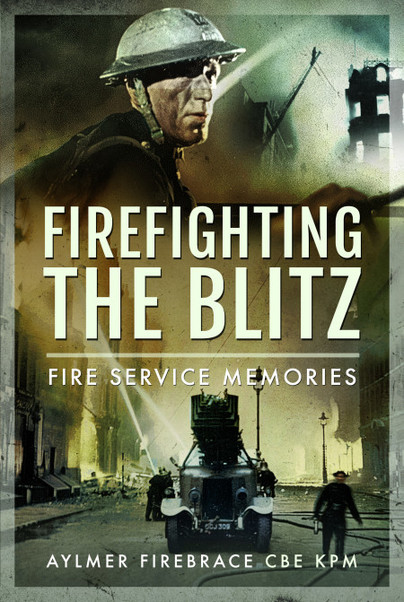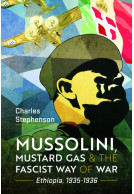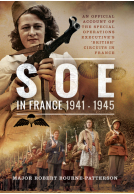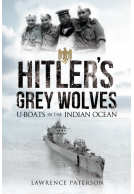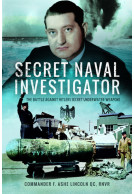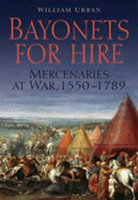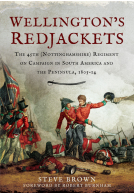Firefighting the Blitz (eBook)
Fire Service Memories

File Size: 10.1 MB (.epub)
Illustrations: 32 black and white illustrations
ISBN: 9781399015004
Published: 28th September 2021
| Other formats available - Buy the Hardback and get the eBook for £1.99! | Price |
|---|---|
| Firefighting the Blitz Hardback Add to Basket | £25.00 |
War was coming. Everyone knew that confrontation with Nazi Germany was inevitable and that London was likely to be a prime target of Hitler’s bombers. So, in January 1939, Aylmer Firebrace, the Chief Officer of London Fire Brigade, was seconded to the Home Office to plan for the capital’s fire defence.
Before joining the Fire Brigade, Aylmer Firebrace had been a Royal Navy officer who had fought in the Battle of Jutland during the First World War. It was following the Armistice that, in 1919, he became principal officer in the London Fire Brigade. He was promoted to deputy chief and finally chief officer in June 1938..
That war struck London soon enough, but it was on 7 September 1940, that Firebrace’s preparations were truly tested with the start of the Blitz. For the next fifty-seven days and nights London was subjected to the longest continuous bombing campaign in history. Then, as the Luftwaffe ranged wider and further across Britain’s towns and cities, Firebrace was tasked with toured the nation to see the effects of the bombing, at which point he saw the need for a national response. The result was the creation of the National Fire Service. Formed in August 1941, by the amalgamation of some 1,600 separate brigades, this remarkable organisation had, at its peak, a strength of 370,000 men and women. It was led for its entire existence by Aylmer Firebrace.
As the war continued, Firebrace became Chief of the Fire Staff and Inspector-in-Chief of the Fires Services, being the first and, to date, only person to head all the fire-fighting services in Britain. This body had to deal with the expansion of the Blitz as well as the so-called ‘Baedeker’ raids, the ‘tip-and-run’ attacks, Baby Blitz and V1 and V2 offensives of the later years of the war.
In his fascinating account, written immediately the war, Firebrace reflects on the functioning of the fire service at its most testing time. This book is an essential addition to the understanding of the Blitz and how London and the rest of the country survived its darkest hour.
Rating: 5 out of 5 stars
NetGalley, Anonymouse Esq
My older cousin was a professional firefighter. He always said that he had grown up to do what every boy dreams of. He started as a volunteer in his home town, served on fire crews in Vietnam, and came back and went to college and then into the fire service for his whole career. After retirement from firefighting he continued to serve as a fire investigator. He has great stories of hiding in the fields to catch barnburners. My cousin would have loved this book.
Sir Alymer Firebrace is writing shortly after WWII directly from his notes. He treats us to an exciting and detailed account of life in the fire services around London up through the war, beginning with an historical account of how the services were organized and how fires were handled under the decentralized system that prevailed before the war and then the run up to the aerial bombardment during the war. His enthusiasm for his work is apparent as he tells of dashing off to observe the most interesting fires while he was supposed to be a manager. It's very important to see with your own eyes, he tells us as he jumps into his car.
If this topic interests you at all you will be thrilled by this book. It is very well written by a man who was trained for his leadership role in the old military system where clear and concise writing was expected of officers. The memoir is generous, humorous, and full of the most interesting details of a world very unlike ours today.
Rating: 5 out of 5 stars
NetGalley, Andrew Breza
Learn the history of 20th century firefighting from the man who led England's emergency response to the Blitz. Firebrace (an aptonym if ever I've heard one) combines anecdote and high-level strategy in a book that is simultaneously entertaining, thought provoking, and informative.
Sir Aylmer Firebrace's tales of firefighting in the old days was truly fascinating with his vivid and evocative descriptions, although some of the book was a bit technical. I especially liked the stories of the horses-some of them were so well-trained that they thought of each other's welfare and they sounded lovely, although it was a hard job for them, of course. It was also filled with hair-raising accounts of fires in warehouses, planes and boats, and what firemen had to do to put them out. The bravery of these early firefighters was just staggering. I would like to read more about this.
NetGalley, Lisa Sanderson
Wow! Mr. Firebrace has led a very interesting life. His book is a window into a world that is captivating. I found myself unable to stop reading at night. Very few people can tell such a story with such vivid descriptions. I would recommend this book for anyone who enjoys history and the beginnings of firefighting in England.
NetGalley, Sandra Berryman
About Sir Aylmer Firebrace CBE KPM
Born on 17 June 1886, Commander Sir AYLMER NEWTON GEORGE FIREBRACE CBE, KPM was educated at HMS Britannia, following which he enlisted in the Royal Navy. Rising through the ranks, he saw active service in the First World War, being present at the Battle of Jutland in 1916. In 1919, he joined the London Fire Brigade and, in June 1938, became its chief officer. With the creation of the National Fire Service, which existed until 1948, Firebrace became the first and only person to head firefighting across the whole of Great Britain. Retiring in 1947, Firebrace passed away in June 1972.
Beginning of The Blitz
7th September 1940
Beginning of The Blitz as the German Luftwaffe bomb London for the 1st of 57 consecutive nights losing 41 bombers as the Nazis prepare to invade Britain.







